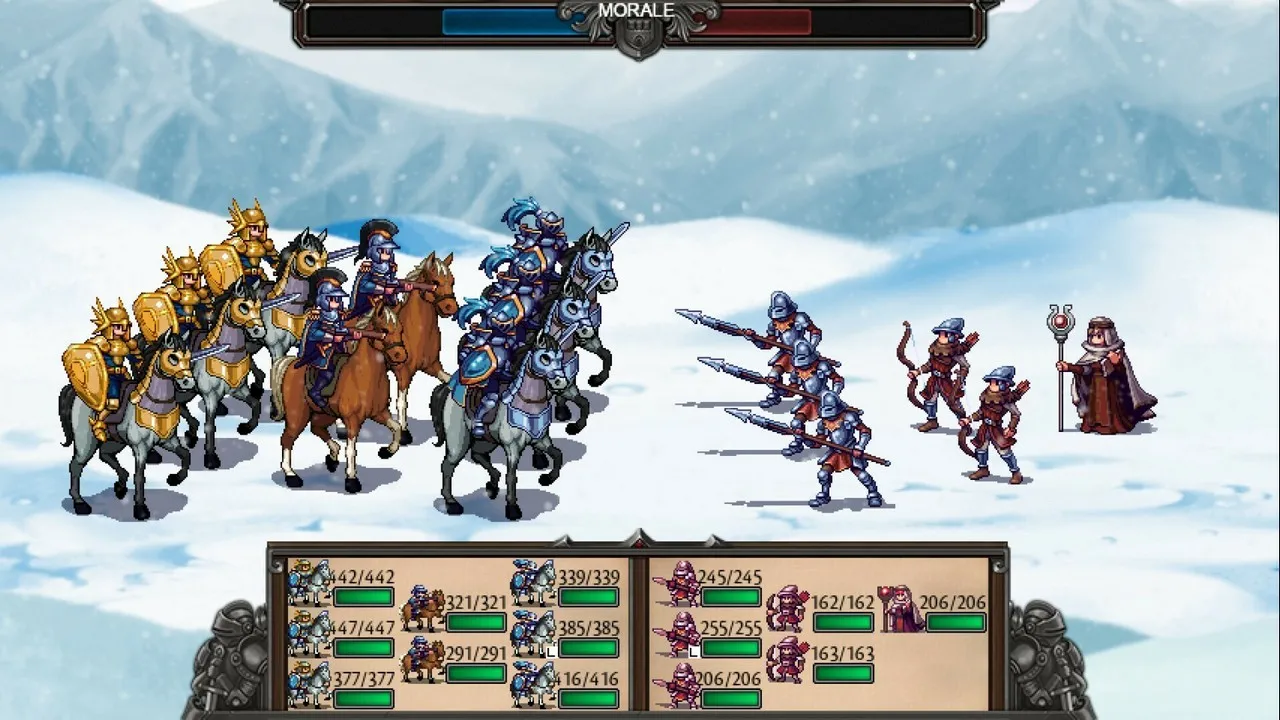
Symphony of War: The Nephilim Saga Review: A Bold New Take on Tactical RPGs
Contents
Turn-based RPGs, a genre with roots stretching back over 40 years to Japanese developers, continue to captivate players today. Iconic franchises like Final Fantasy and Dragon Quest have cemented their place in gaming history. The evolution of this genre has led to exciting hybrids, such as the tactical RPG (S-RPG), exemplified by series like Fire Emblem and Tactics Ogre. Symphony of War: The Nephilim Saga, developed by Dancing Dragon Games, stands as a compelling example of this subgenre, showcasing innovative gameplay while paying homage to its predecessors. With “Overwhelmingly Positive” reviews on Steam, it’s clear Symphony of War has struck a chord with players. This review dives into what makes Symphony of War: The Nephilim Saga a unique and engaging experience.
 alt text describing image of gameplay showing character movement
alt text describing image of gameplay showing character movement
Innovative Gameplay Sets Symphony of War Apart
At its core, Symphony of War retains the familiar S-RPG structure. Gameplay unfolds across chapters driven by a central narrative. Each stage features a grid-based map, where terrain types influence unit movement and combat effectiveness. Players deploy pre-determined units, often key characters in the story, with objectives typically involving eliminating enemies or capturing strategic locations. Turns alternate between the player and the enemy. During their turn, players maneuver and attack within their units’ range. Enemies retaliate if within range and still capable of fighting. Units gain experience and level up, improving their stats. Reaching certain levels allows units to “evolve” into new classes with enhanced stats and abilities.
However, Symphony of War introduces several key innovations that elevate the gameplay experience. Instead of single units occupying grid spaces, players form squads of up to nine units, led by a designated leader. Each unit type possesses unique movement ranges, attack ranges, damage types, and support skills. Combined with the leader’s abilities, this creates a vast array of tactical possibilities.
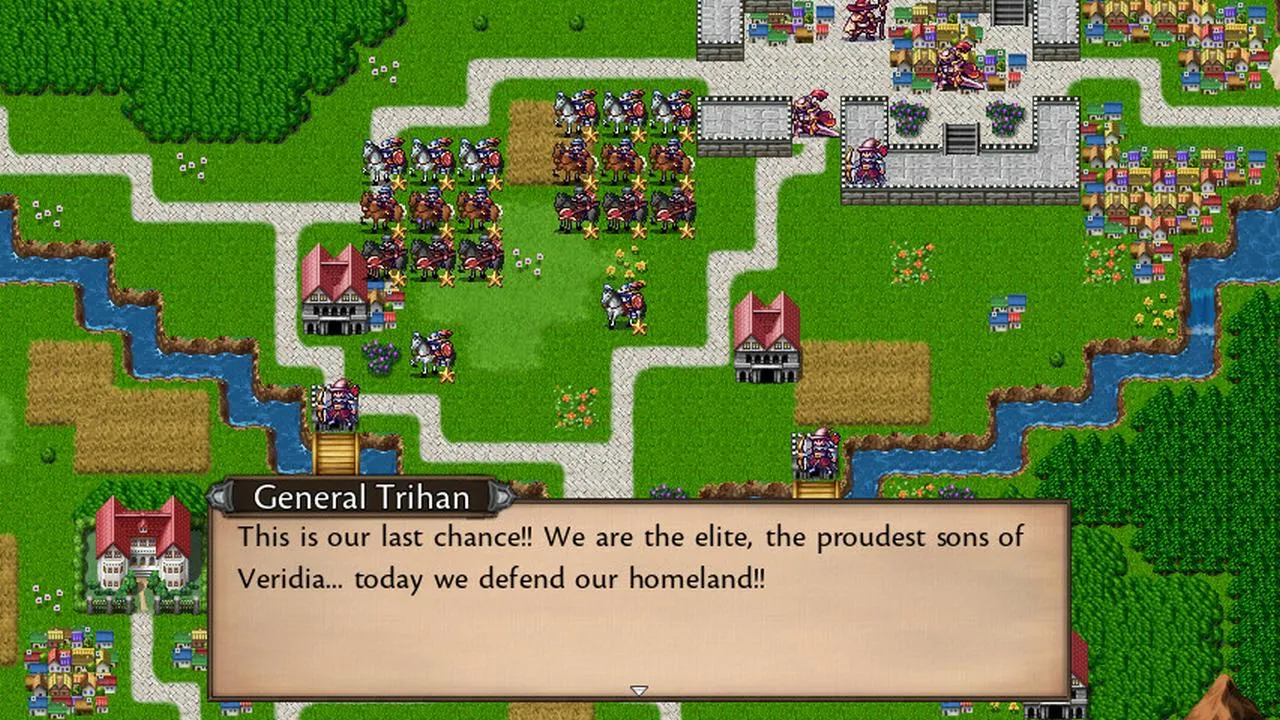 alt text describing image of gameplay showing unit information
alt text describing image of gameplay showing unit information
Furthermore, the number of attacks a squad can perform per turn scales with the number of units, unlike traditional S-RPGs where each unit attacks once. This significantly impacts squad composition and attack order, as enemies also have multiple attacks based on their squad size. Symphony of War boasts a remarkable variety of unit types and evolutions, exceeding even Fire Emblem. Each unit is meticulously designed with distinct tactical roles and characteristics, encouraging players to experiment and strategize.
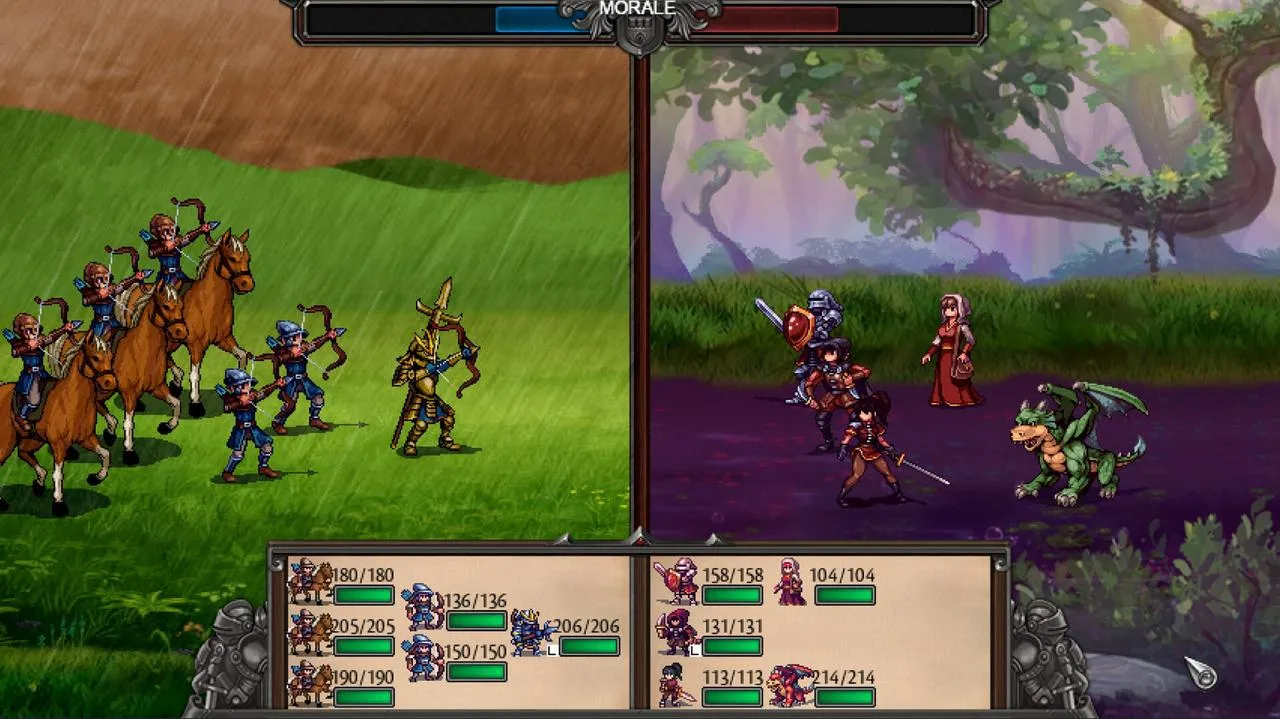 alt text describing image of gameplay showing combat scene
alt text describing image of gameplay showing combat scene
The ability to recruit defeated enemies and hire mercenaries adds another layer of strategic depth. Players truly feel like commanders, assembling and managing their forces across the battlefield. Symphony of War also excels in providing comprehensive information about game mechanics, concepts, and units. An in-game encyclopedia offers detailed descriptions and illustrations, organized in an easily navigable format. This invaluable resource aids players in understanding the game’s intricacies, especially considering the complex interplay of its numerous mechanics.
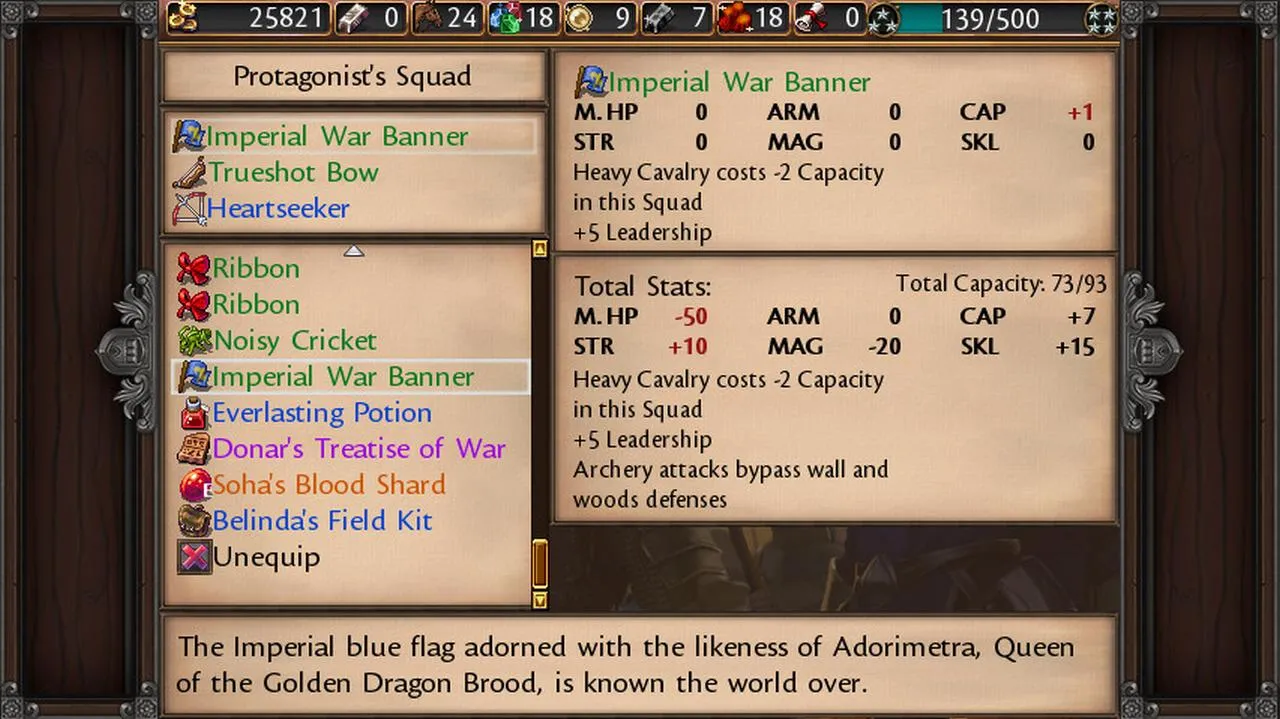 alt text describing image of gameplay showing unit stats and information
alt text describing image of gameplay showing unit stats and information
Minor Drawbacks Hold Symphony of War Back
Despite its innovative gameplay, Symphony of War suffers from some shortcomings. The graphics are inconsistent. While character and unit sprites are beautifully detailed, the map backgrounds and dialogue screens appear simplistic and repetitive, reminiscent of default RPG Maker assets. The clash between pixel art and high-definition character portraits further contributes to a visually jarring experience. Managing the hundreds of available units is cumbersome due to a clunky interface lacking filtering options. This hinders experimentation and slows down the pace of play.
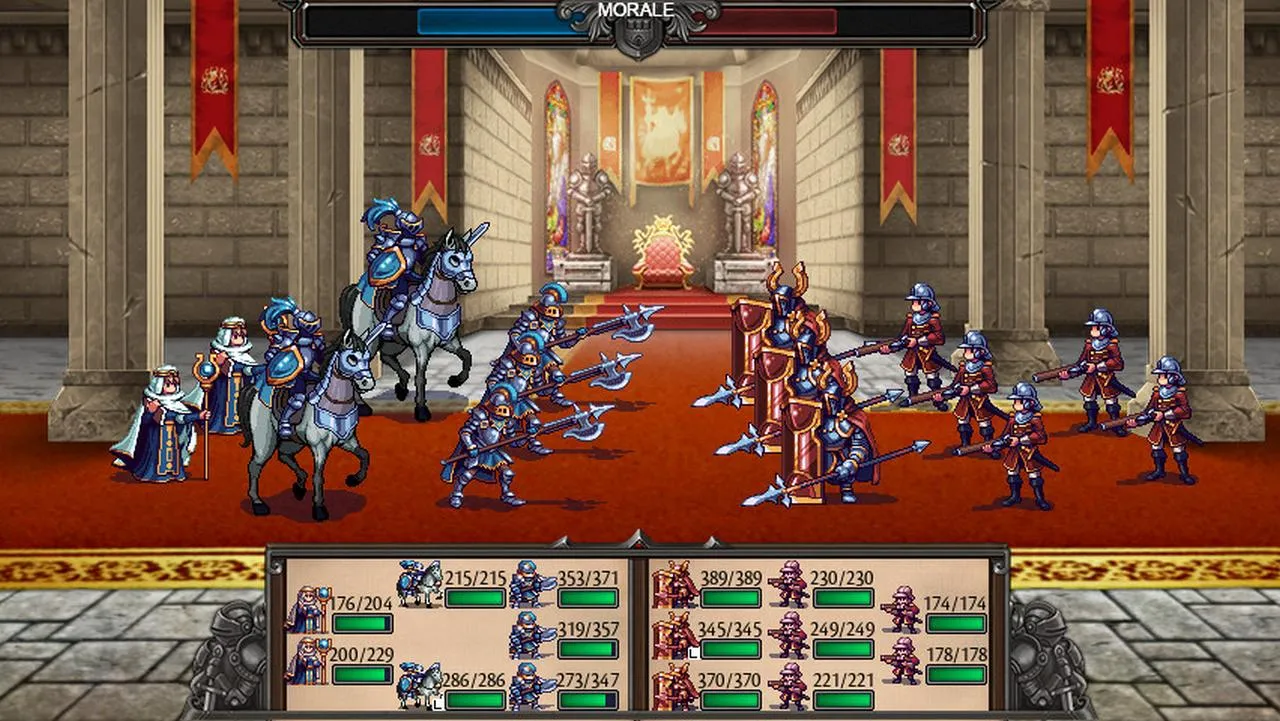 alt text describing image of promotional art for the game
alt text describing image of promotional art for the game
The narrative, while ambitious in scope, falls short. The story attempts a grand, Fire Emblem-esque tale of intercontinental warfare, political intrigue, and personal dramas. However, the plot suffers from pacing issues, convoluted dialogue, melodramatic writing, and underdeveloped characters. The game’s balance also falters in the later stages. The abundance of resources and upgrade options leads to player overpoweredness, rendering strategy and unit composition less significant.
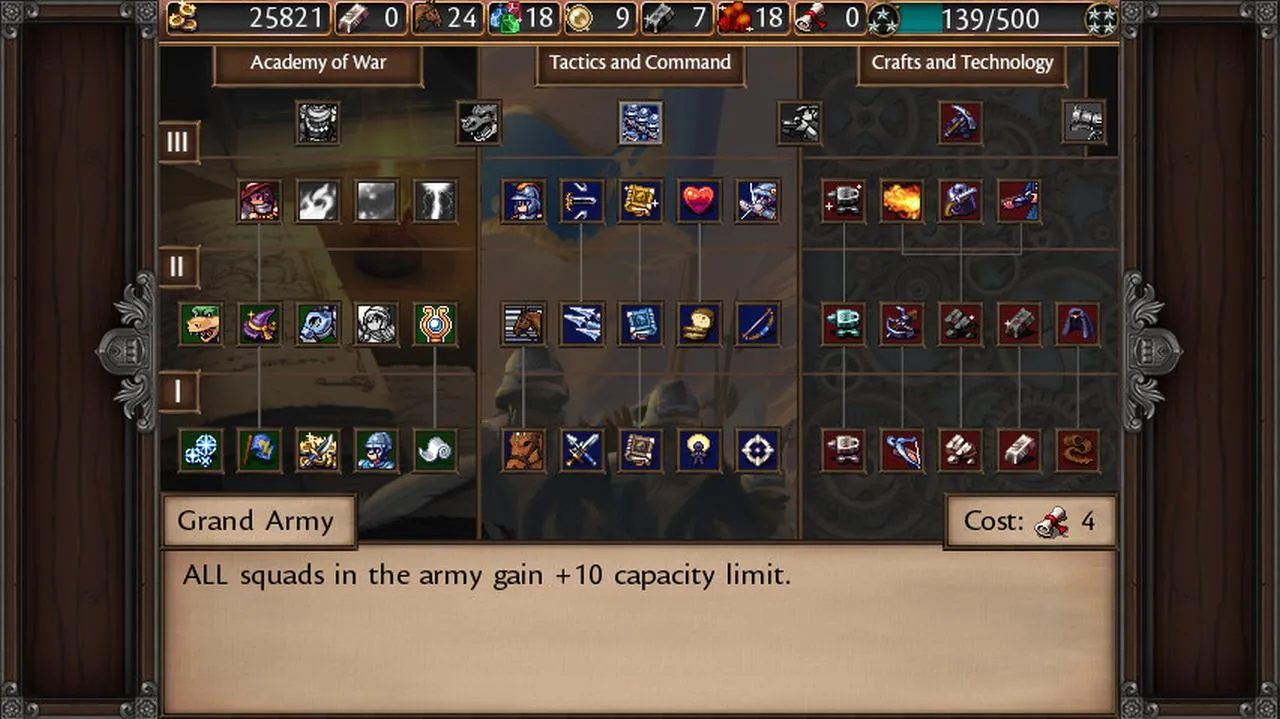 alt text describing image of gameplay showing in-game conversation
alt text describing image of gameplay showing in-game conversation
Conclusion
Symphony of War: The Nephilim Saga offers a refreshing take on the tactical RPG genre with its innovative squad-based combat and deep unit customization. While minor flaws in presentation, interface, and balance hold it back, the core gameplay loop is undeniably engaging. Symphony of War is a must-try for fans of the genre looking for a new challenge.





Comments (0)